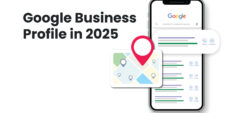Companies who blog receive 97% more links to their website, and as such, it is extremely beneficial and important to have a blog of your own. If you’ve just started a business and are unsure of how to write a good blog post, this guide has 8 useful tips that can help you a lot:
1. Know who your audience is
How are you going to write a blog post if you don’t know who you’re writing it for?

Learn who your audience is, what they like, and what they’re searching for. Learn their age, gender, interests, purchases, searches, and many more. This a number of analytical tools that can help you learn more about all of those things: Google Adwords, Facebook Insights, Google Analytics, Instagram Insights, Twitter Insights, and many more.
2. Choose a relevant topic
Now that you know who your audience is, you also know what they’re searching for on the internet. If you run a cooking blog, look for the cooking-related searches your customers are making and then tailor your posts according to those. This may sound absurd, but there are always new trends in cooking, as there are in everything else, especially when the seasons change.
We ourselves are a digital agency, so our posts are about web development, web design, and SEO, which are the main things our readers and customers are interested in.
Remember, write about the topics that you know your readers will be interested in, don’t write just for the sake of having a blog post on your blog.
3. Crafting a good headline
A headline is what grabs the reader’s attention, so it’s important that it is well crafted.
There are a few tips that make headlines more likely to be clicked:
- Use of numbers – For example, ’15 new trends in web design’, the higher the number, the better. Also, it’s better to include the number at the beginning of the headline rather than in the middle
- A promise of learning something new – A headline titled ‘A guide to SEO’ will immediately let people know that the blog post will be useful to them
- Include words and phrases such as ‘How to’ or ‘How does’, this has the same effect as ‘a guide to’, but is also useful for voice search SEO
- Length – Make sure that your headline isn’t too long, the ideal length is about 60 characters. This is because a short headline is almost guaranteed to grab the attention of a reader, but also because short titles, when linked to social media, can be read whole, with no ellipses.
4. Make it informative
People don’t click blog posts unless they’re really interested in them, so make sure you’re not wasting their time.

The content you’re writing should deliver and be accurate to the headline. No one likes clickbait, it is a cheap tactic that will just drive your readers away from your content. Teach your readers something new or offer a good answer to a question they have.
5. Optimize for SEO
Unlike all the previous steps, which were focused on the readers, this one is focused on SEO.
Use your keywords and related keywords accordingly and don’t stuff your text with them. This ensures a lack of repetitiveness and makes the text flow better.
Add a good meta title, meta description, pepper your keywords and related keywords throughout the text, add internal and backlinking if possible. All of these make your website look more legitimate in Google’s eyes, and as such, your website will get a better ranking on the search page results.
6. Use subheadings
Important for both readability and SEO, subheadings are crucial when it comes to writing blog posts.
They separate paragraphs and create more space between them, which makes your text easier on the eyes. Also, when search engine bots crawl through your content, subheadings make it easier for them to scan your content, as well.
An interesting statistic shows that 55% of people read blog posts for 15 seconds or less. Most of them open your article and scan through, reading only the subheadings. If your subheadings are accurate to the headline, after reading those, the reader might stay and read the entirety of it. But if they aren’t, they will just close your blog post and find another one that answers their questions.
Another useful thing is to use lists and bullet points when possible. These also help the readability and overall organization of the text.
7. Add images
Yes, the article is on how to write a blog post, but images are also very important.
The featured image is what appears on top of the blog post and just like the headline, it exists to attract attention. But make sure that they’re actually related to the headline. For example, if you’re writing about social media, the featured image can include a phone with social media opened on it.

Concerning the images inside of the text, they have the same purpose as subheadings. They separate blocks of text and create a sort of a pitstop for the reader: they can rest their eyes from reading and enjoy an interesting image.
Don’t forget to optimize your images, because a large format will slow down your website significantly, especially for mobile users.
8. Length
According to numerous studies, the ideal blog length for 2019 is 1600 – 1700 words.
Google prefers longer blog posts, which is why writing those is preferable, while not always achievable. Some posts simply cannot be that long, because some questions and guides can be answered and written about in far fewer words. It’s good to come to terms with the fact that some posts will be much longer, while some will be shorter.
In my opinion, it is far more important to write a relevant and high-quality blog post that will give a good answer to whatever the topic is than to come up with 1600 words in a topic that no one will be interested in.
Conclusion
Having a blog is extremely important for a business in this day and age, and some even say it is crucial. The content you post on your blog should be relevant, informative, well-formatted and optimized and we hope that these 8 tips have helped you in creating the best content for your website.
If you have any more good tips on how to write a blog post, leave a comment!





